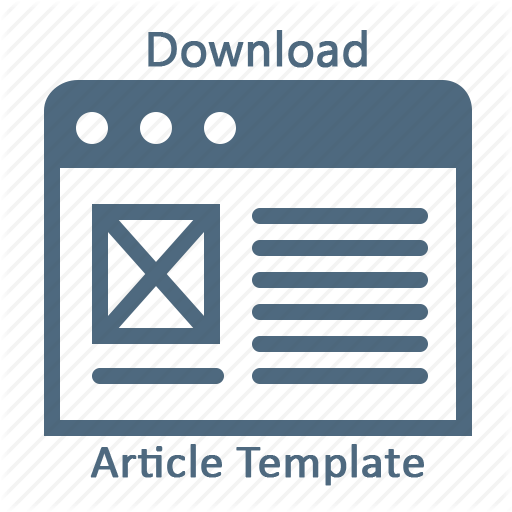Penggunaan Gaya Bahasa Kiasan dalam Podcast Ormas Deddy Corbuzier
DOI:
https://doi.org/10.37985/jer.v6i1.1597Keywords:
Bentuk Gaya Bahasa Kiasan, Podcast Ormas Deddy Corbuzier, media sosial YoutubeAbstract
Penelitian ini mengkaji penggunaan gaya bahasa kiasan dalam podcast Ormas Deddy Corbuzier di media sosial youtube. Tujuan penelitian adalah untuk mengidentifikasi dan menganalisis bentuk-bentuk gaya bahasa kiasan yang digunakan dalam podcast tersebut. Penelitian ini menggunakan pendekatan kualitatif dengan metode deskriptif dan analisis konten. Teknik pengumpulan data dikumpulkan melalui teknik kepustakaan dengan mengutip kata-kata kiasan dari video podcast. Teknik analisis data yang digunakan mengacu pada model Miles dan Huberman, yang meliputi reduksi data, penyajian data, dan verifikasi. Hasil penelitian menemukan tujuh bentuk gaya bahasa kiasan: personifikasi, simile, metafora, ironi, sinisme, antifrasis, dan paranomasia. Personifikasi ditemukan dalam penggunaan kata yang memberikan sifat manusia pada benda mati, sementara simile teridentifikasi melalui perbandingan eksplisit. Metafora membandingkan tanpa penghubung, seperti menyebut seseorang sebagai "binatang". Ironi muncul ketika pujian bertentangan dengan kenyataan, sedangkan sinisme berupa sindiran tajam. Antifrasis digunakan dengan menyatakan hal yang berlawanan dengan kenyataan, dan paranomasia ditemukan dalam permainan kata yang mirip bunyinya namun berbeda makna.
Downloads
References
DAFTAR PUSTAKA
Alwi, H. (2015). Stilistika Bahasa Indonesia. Jakarta: Balai Pustaka.
Androutsopoulos, J. (2006). Introduction: Sociolinguistics and computer-mediated communication. Journal of Sociolinguistics, 10(4), 419-438. https://doi.org/10.1111/j.1467-9841.2006.00287.x
Burgers, C., Konijn, E. A., & Steen, G. J. (2016). Humor types and political satire: Conceptualizing humor in communication. Humor: International Journal of Humor Research, 29(3), 329-348. https://doi.org/10.1515/humor-2016-0020
Cahyono, B. Y., & Wekke, I. S. (2019). Metode Penelitian Sosial. Makassar: Gawe Buku CV. Adi Karya Mandiri.
Corbuzier, D. (2023). Podcast Ormas: Exploring social discourse. Retrieved from YouTube: https://www.youtube.com/DeddyCorbuzier
Creswell, J. W. (2013). Research design: Qualitative, quantitative, and mixed methods approaches (4th ed.). Thousand Oaks, CA: Sage.
Crystal, D. (2011). Internet linguistics: A student guide. London: Routledge.
Halliday, M. A. K., & Matthiessen, C. M. I. M. (2014). An introduction to functional grammar (4th ed.). London: Routledge.
Keraf, G. (2006). Diksi dan gaya bahasa. Jakarta: Gramedia Pustaka Utama.
Kominfo. (2020). Laporan tahunan perkembangan media sosial di Indonesia. Jakarta: Kementerian Komunikasi dan Informatika RI.
Lakoff, G., & Johnson, M. (1980). Metaphors we live by. Chicago: University of Chicago Press.
Mayring, P. (2014). Qualitative content analysis: Theoretical foundation, basic procedures, and software solution. Klagenfurt, Austria: Beltz.
Miles, M. B., & Huberman, A. M. (1994). Qualitative data analysis: An expanded sourcebook (2nd ed.). Thousand Oaks, CA: Sage.
Santrock, J. W. (2011). Educational psychology (5th ed.). New York: McGraw-Hill.
Simpson, P. (2004). Stylistics: A resource book for students. London: Routledge.
Strauss, A., & Corbin, J. (1998). Basics of qualitative research: Techniques and procedures for developing grounded theory (2nd ed.). Thousand Oaks, CA: Sage.
Subadi, T. (2006). Metode Penelitian Kualitatif. Surakarta: Muhammadiyah University Press.
Suherman, R. (2018). Bahasa dalam diskusi politik di media sosial. Yogyakarta: Graha Ilmu.
Wekke, I. S., & dkk. (2019). Metode Penelitian Sosial. Makassar: Gawe Buku CV. Adi Karya Mandiri.
Zeng, J., & Green, R. (2018). Digital rhetoric: A new approach to communication on social media. New Media & Society, 20(4), 142-157. https://doi.org/10.1177/1461444818763437
Downloads
Published
How to Cite
License
Copyright (c) 2025 Rahmat Zaki Apriansah, Vebbi Andra, Irwan Satria

This work is licensed under a Creative Commons Attribution-ShareAlike 4.0 International License.
Authors who publish with this journal agree to the following terms:
- Authors retain copyright and grant the journal right of first publication with the work simultaneously licensed under a Creative Commons Attribution-ShareAlike 4.0 International License that allows others to share the work with an acknowledgement of the works authorship and initial publication in this journal.Â
- Authors are able to enter into separate, additional contractual arrangements for the non-exclusive distribution of the journals published version of the work (e.g., post it to an institutional repository or publish it in a book), with an acknowledgement of its initial publication in this journal.
- Authors are permitted and encouraged to post their work online (e.g., in institutional repositories or on their website) prior to and during the submission process, as it can lead to productive exchanges, as well as earlier and greater citation of published work (See The Effect of Open Access).









